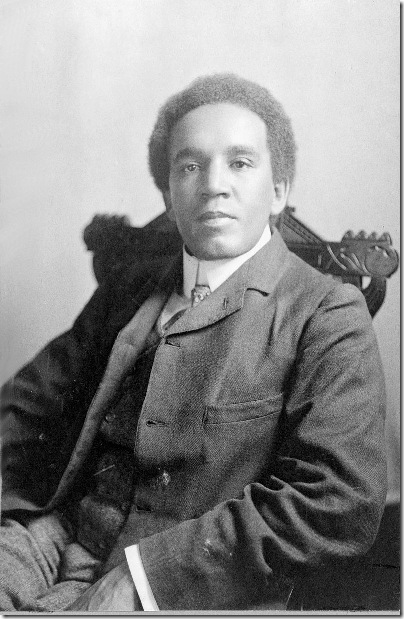There is something about French musical culture that inclines it toward woodwinds — perhaps because of the sound of French language — and when it comes to the Palm Beach Chamber Music Festival, French music has played a powerful role in its 24 season of concerts.
Two French rarities were featured Saturday night at the Eissey Campus Theatre in Palm Beach Gardens during the third program of this summer’s four-program festival, along with music by Haydn, Mexican modernist Carlos Chavez, and the British Romantic Samuel Coleridge-Taylor.
The French pieces, both septets of slightly different instrumentation, were the Pastorale Varieé of Gabriel Pierné and the Chanson et Danses of Vincent d’Indy. The Pierné, written in 1894 for wind quintet with trumpet and second bassoon, is a straightforward series of short variations on a cheerily pentatonic folk-like tune. In the two variations where the trumpet (an excellent Brian Stanley) was most prominent, the music has an almost Renaissance fanfare flavor that was quite attractive.
The seven musicians played the work with admirable clarity and brightness, followed by the d’Indy, which is for wind quintet plus a second clarinet and a second bassoon. As flutist Karen Dixon noted in her remarks before the piece, the shadow of Wagner’s Siegfried Idyll hangs over the first part of the two-part work, not surprising given d’Indy’s fanatic Wagnerism.
And indeed, the music is much more Germanic than the Pierné Pastorale, but it retains an elegance of line common to both as well as a formal directness that leaves no doubt about the direction it’s headed. There are multiple solo lines in the slow Chanson as the music gradually unfolds, and the individual musicians played them with breadth and warmth. The bustling Danses, with its galloping triplets and folk-tinged melody soaring above it, sounded crisp and exciting.
The first half of the concert opened with a standard work from the string quartet repertoire, the Bird Quartet (No. 32 in C, Hob.III: 39) of Haydn. The four women who played it — violinists Mei Mei Luo and Dina Kostic, violist René Reder and cellist Susan Moyer Bergeron — have worked as a quartet in this festival for more than a decade, and they have an admirable sense of ensemble. This was a respectful, careful reading of the quartet in which Haydn’s sunny disposition and directness were front and center.
Most notable here was a thorough adoption of a strict Classicism. This was a performance that was entirely in the Haydn style, with no Romantic excess, and that includes the matter of tempos. The finale of this work is well-known on its own, and it’s a frantic Presto that can be fun if it’s taken prestissimo to see whether it will hold together. But the quartet stayed within the bounds of temporal reason, and the movement delighted all the same.
The second half of the concert opened with the Soli I of Carlos Chávez, the Mexican modernist whose friendship beginning in the 1930s with Aaron Copland led to the American composer’s El Salon Mexico. For his part, Copland regularly touted the music of Chávez, and this four-movement work for oboe, clarinet, trumpet and bassoon shows they shared the same pungent sense of angular rhythm and dissonance.
This music is much more interested in line and motif than in functional harmony or song-like structures, and it reflects very well the aggressive modernism of the early 1930s. It’s bracing, interesting music, and the four players — oboist Sherie Aguirre, clarinetist Scott Ellington, bassoonist Michael Ellert and trumpeter Stanley — handled it well. They tended to soften its edges; an argument could be made that the final movement in particular needs to be very loud and forceful, but this foursome’s calmer approach shed more light on the craft of the music.
The program closed with a very rarely heard work, the Clarinet Quintet (Op. 10) of the short-lived English composer Samuel Coleridge-Taylor. This is a beautifully crafted, thoroughly professional work from 1895 that deserves more hearings along with the Brahms and Mozart clarinet quintets. Its primary allegiance is to the music of Dvořák, but I also hear a hint of British folksong that gives it a special flavor.
Clarinetist Michael Forte, joined by the festival string quartet, played the work very much as a collaborative chamber musician and not as a soloist, though some more presence on his part would have been welcome. The pretty second movement, for instance, would have stood out more if Forte had taken a higher profile, which music of this kind of serene consistency could have used.
But it is a lovely, overlooked quintet, and just the kind of discovery that this festival specializes in, and one that would enrich the concertgoing lives of chamber music fans were it to be regularly adopted.
The Palm Beach Chamber Music Festival’s fourth concert program debuts tonight at 7:30 in in the Persson Recital Hall at Palm Beach Atlantic University. It repeats at 7:30 p.m. Saturday in the Eissey Campus Theatre on the campus of Palm Beach State College in Palm Beach Gardens, and at 2 p.m. Sunday at the Crest Theatre in Delray Beach. Music by Neumann, Piazzolla, Debussy and Farrenc is on the program. Tickets are $25; call 547-1070 or visit www.pbcmf.org.
